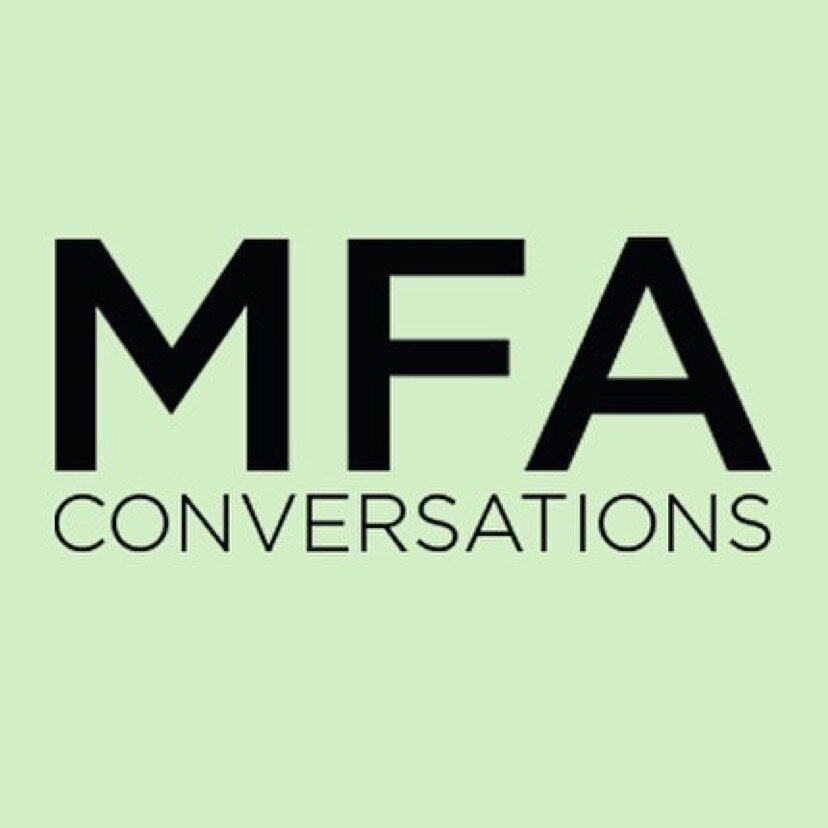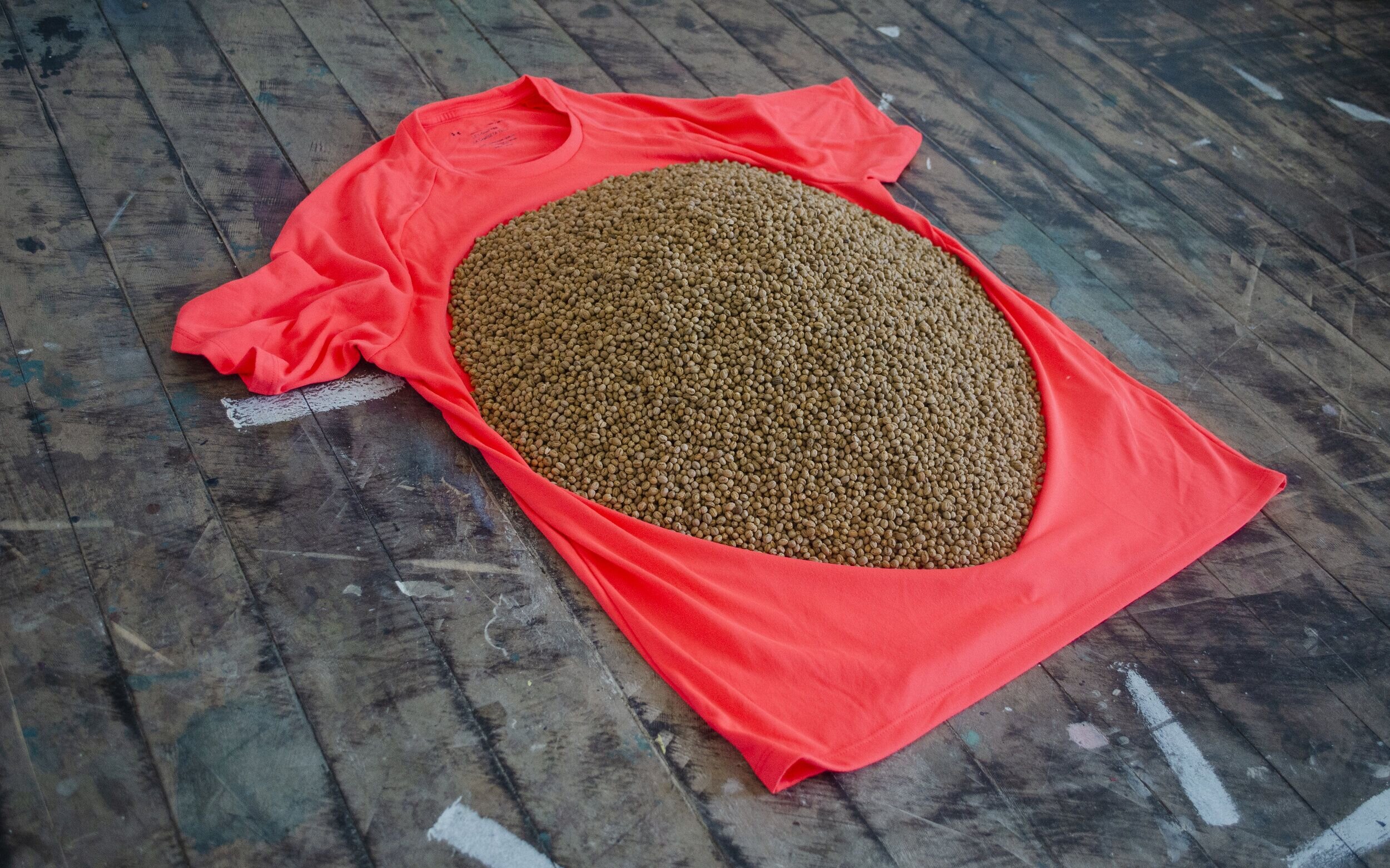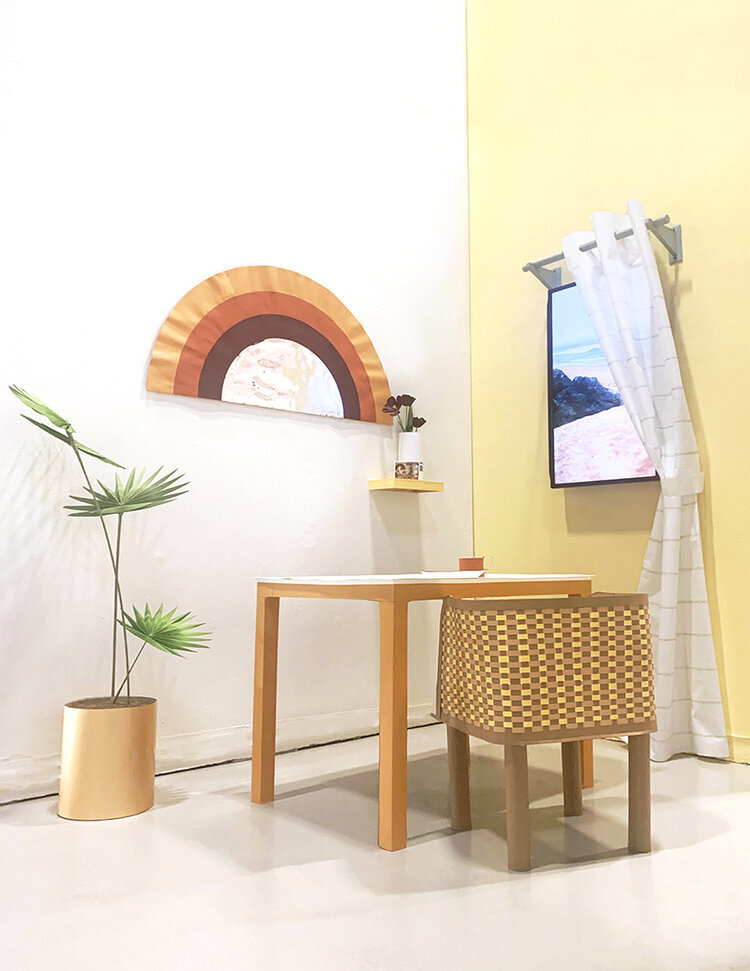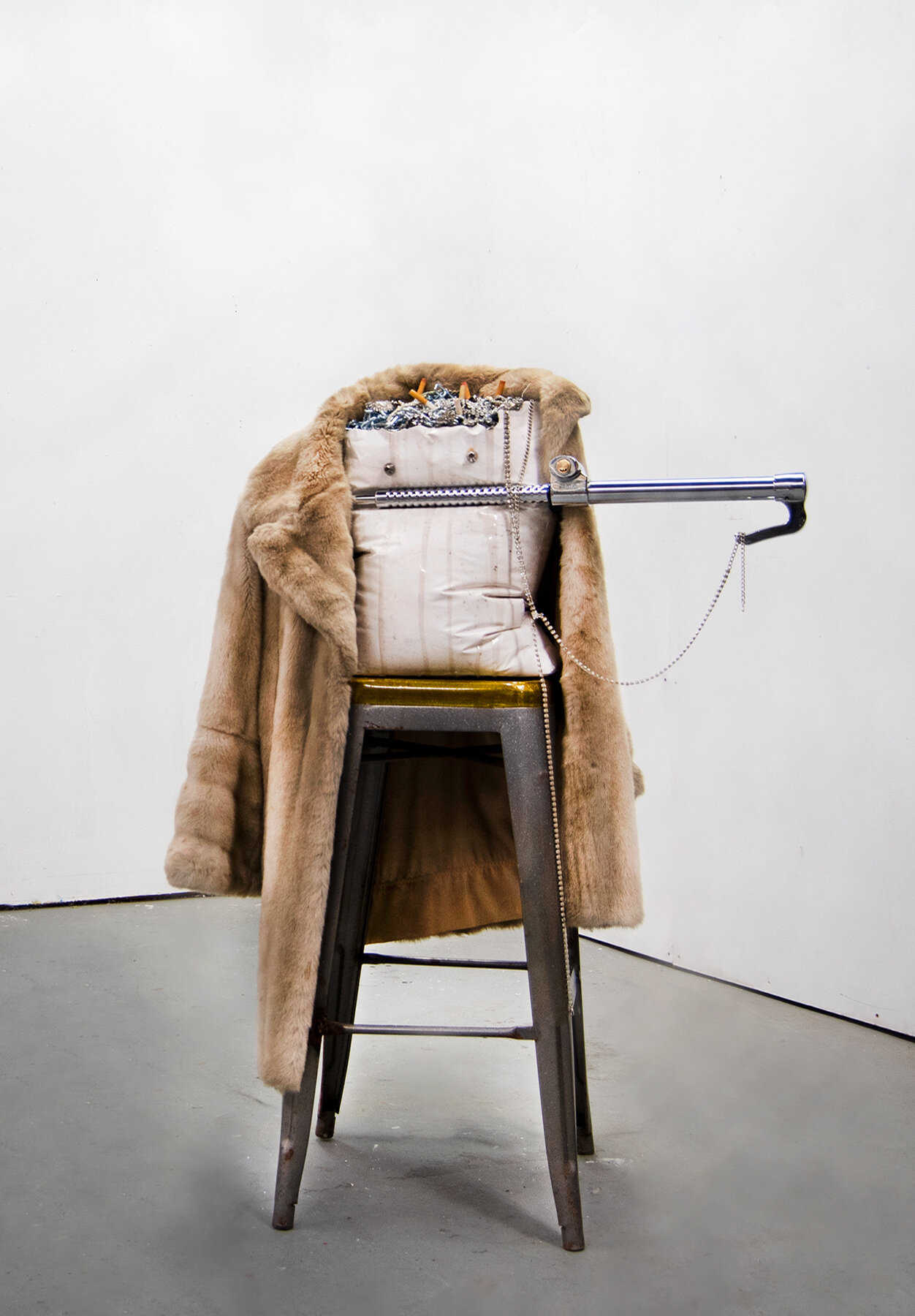CRISTINE BLANCO
Mills College
Cristine Blanco
Look Don’t Touch, 2019
Paper, cardboard, hot glue, and video installation
Image courtesy of the artist
CRISTINE BLANCO works in installation, video, painting, and sculpture. She is interested in climate change, domesticity, social and economic disparities resulting from environmental injustices, the immigrant experience, and the fragility of the American Dream. Inspired by memories of her family’s home in the Philippines, Blanco’s work investigates identity and the effects of global warming, specifically the impact of rising sea levels.
In her thesis series Grandma’s House, Blanco references how we continue to adapt and live given difficult circumstances. The piece Dining Table consists of a large wooden table balanced on top of white plastic chairs, perched on top of tin cans of food, lifting them above the high tide and floods. The sculpture Side Table has its lower shelves filled with poured concrete, showing how high the water level rose. This piece is accompanied by a photo that uses her pared-down color palette. She removes color and the details of the figures to guard her personal memories, giving the viewer only references to the origins.
Cristine Blanco
Dining Table, 2020
Four plastic chairs, wooden table, expired canned pork, canned pineapple, canned hominy, canned liver spread, Vienna sausages, creamed corn, sardines, and spray paint.
Photo by Lucciana Caselli
Cristine Blanco
Side Table, 2020
Wooden table, concrete, paper, glass jar, and house paint on printed paper
Photo by Lucciana Caselli
The furniture Blanco incorporates into her pieces reference economic class and status — the actual pieces she uses are sturdy and layered with associations. A very different form of furniture is featured in other installations and her video work. In the installation Look Don’t Touch, Blanco has created a chair, table, wall art, a vase with flowers, and a potted palm plant, all constructed from paper and cardboard. This pastel-hued paper construction of a domestic setting feels nostalgic in style, inspired by and reproduced from photos with her mother from the late 1970s. The tenuous paper forms in the installation go on to have another life (and final ending) as Blanco transports the fragile furniture forms to a rugged Northern California beach, installing them as they were in the first installation, but now out of place and even more vulnerable on the coastal rocks, threatened by the nearby waves. Blanco ultimately sets fire to the paper installation and the fire consumes all. The process is documented in her video Residential Status, but in the video we see the action in slow motion and reverse; rather than the fast destruction we know is possible with fire, we see a gradual coming together of forms from the flames.
Residential Status, video excerpt, 2020
With COVID-19, Cristine is finding that her own practice is also adapting to this new situation. From the start of the shelter-in-place order, she turned to her own backyard and the soil there, to create work in and from. She is continuing to work on a piece she started before the pandemic entitled Stair-Hallway. Through conversations with her dad about the family home and how much of it was lost, she combines his memories with the reality of the measurements. Cristine is re-creating a set of stairs, making bricks by hand from the soil in her backyard. The process of making bricks this way is slow and labor intensive, but with it there is resilience in experiencing first-hand adaptation to major changes like working through a global pandemic. In this process, she is connecting herself and her home in Oakland to her family home in the Philippines.
In-progress shots of Stair-Hallway clay bricks
In-progress shots of Stair-Hallway clay bricks
Cristine recently exhibited work in Introductions 2020 at Root Division and collaborated on a Black Lives Matter mural project titled Converging Flora at the Mills College campus with artist and fellow 2020 MFA grad Yétundé Olagbaju. In response to cancelled shows, Cristine has curated an outdoor art exhibition called In the Meantime at Far House Gallery in Pescadero, open from October 30 through November 7.
Artist Statement
Zoom screen capture of Cristine
At this point in time, we are forced to cope with environmental injustices, climate change, the precarity of resources, and a pandemic, all of which have reframed the meaning of home and community. Calling attention to the odd and uncomfortable, I create a sensory vernacular by making sculpture, video, and installation. Inspired by my grandmother’s home in the Philippines, I explore the impact of rising sea levels and consider how human connectivity and adaptation are essential to recovery and transformation.
Through repetition, re-enactment, and reconstruction, I process and make sense of a constantly evolving world. As an artist working in this context, I consider my role in documenting personal and global changes. As the foundations of our lives collectively shift, where can I create moments of reflection and possibilities?
Cristine Blanco
Residential Status, 2020
Screening in the artist’s back yard














